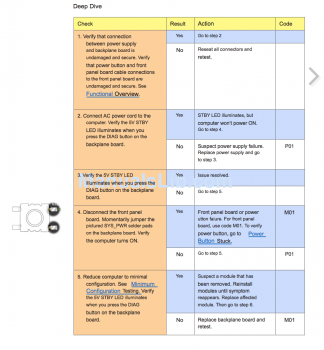So about two years ago I was playing a graphically intensive video game on my Mac Pro 4,1 computer. I was becoming slightly alarmed as I noticed the fans had automatically sped up to cool down the processor, it was getting very noisy. Then suddenly the display just went black. The processor was still running full speed. I shut the computer off at the mains not knowing what to do. Upon restart the monitor wouldn't show anything. I reduced the brightness using the keyboard shortcut and upon restart the display worked. From then on I realised the monitor would only display on reduced brightness (12 brightness increments out of 15 total).
Progressively this got worse over the months and had to lower the brightness more and more for anything to display. When it would work only under 3 brightness increments I purchased a better GPU on the presumption that was the issue. It didn't change anything. Doing more research online I opened up the 24" ACD monitor to inspect capacitors and wires. I bought a new Logic board for the ACD but again, no change. More recently, I bought a PSU for the processor but no change either.
At this point I'm running out of things to check. Recently the processor won't even power on anymore, which eliminates the ACD being the issue. I suspect now the issue is with the motherboard but only due to a process of elimination. What are your thoughts? I don't live in an area where I can swap identical Mac components with a friend or to deliver it to a repair shop to diagnose the problem professionally.
Progressively this got worse over the months and had to lower the brightness more and more for anything to display. When it would work only under 3 brightness increments I purchased a better GPU on the presumption that was the issue. It didn't change anything. Doing more research online I opened up the 24" ACD monitor to inspect capacitors and wires. I bought a new Logic board for the ACD but again, no change. More recently, I bought a PSU for the processor but no change either.
At this point I'm running out of things to check. Recently the processor won't even power on anymore, which eliminates the ACD being the issue. I suspect now the issue is with the motherboard but only due to a process of elimination. What are your thoughts? I don't live in an area where I can swap identical Mac components with a friend or to deliver it to a repair shop to diagnose the problem professionally.










